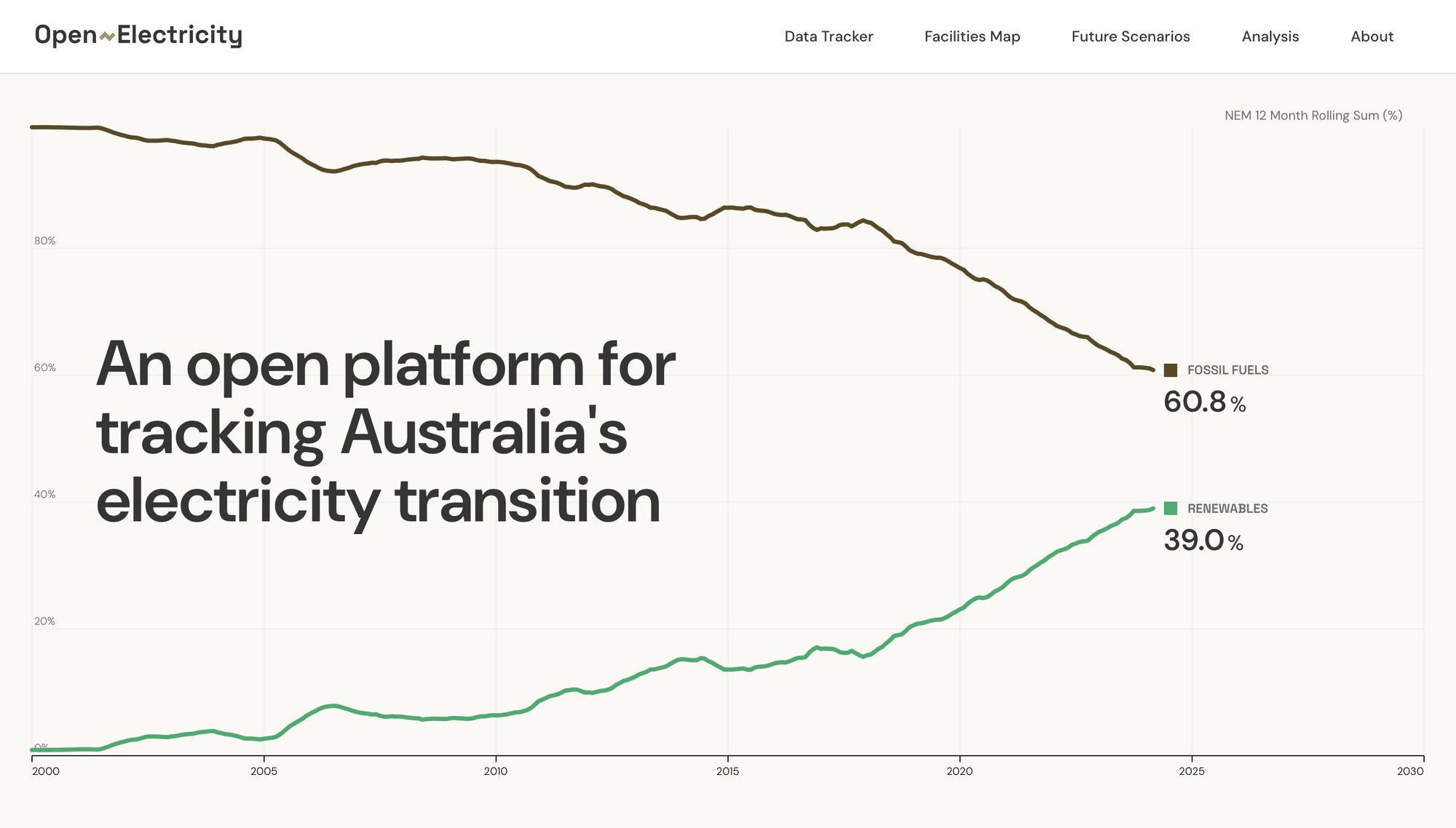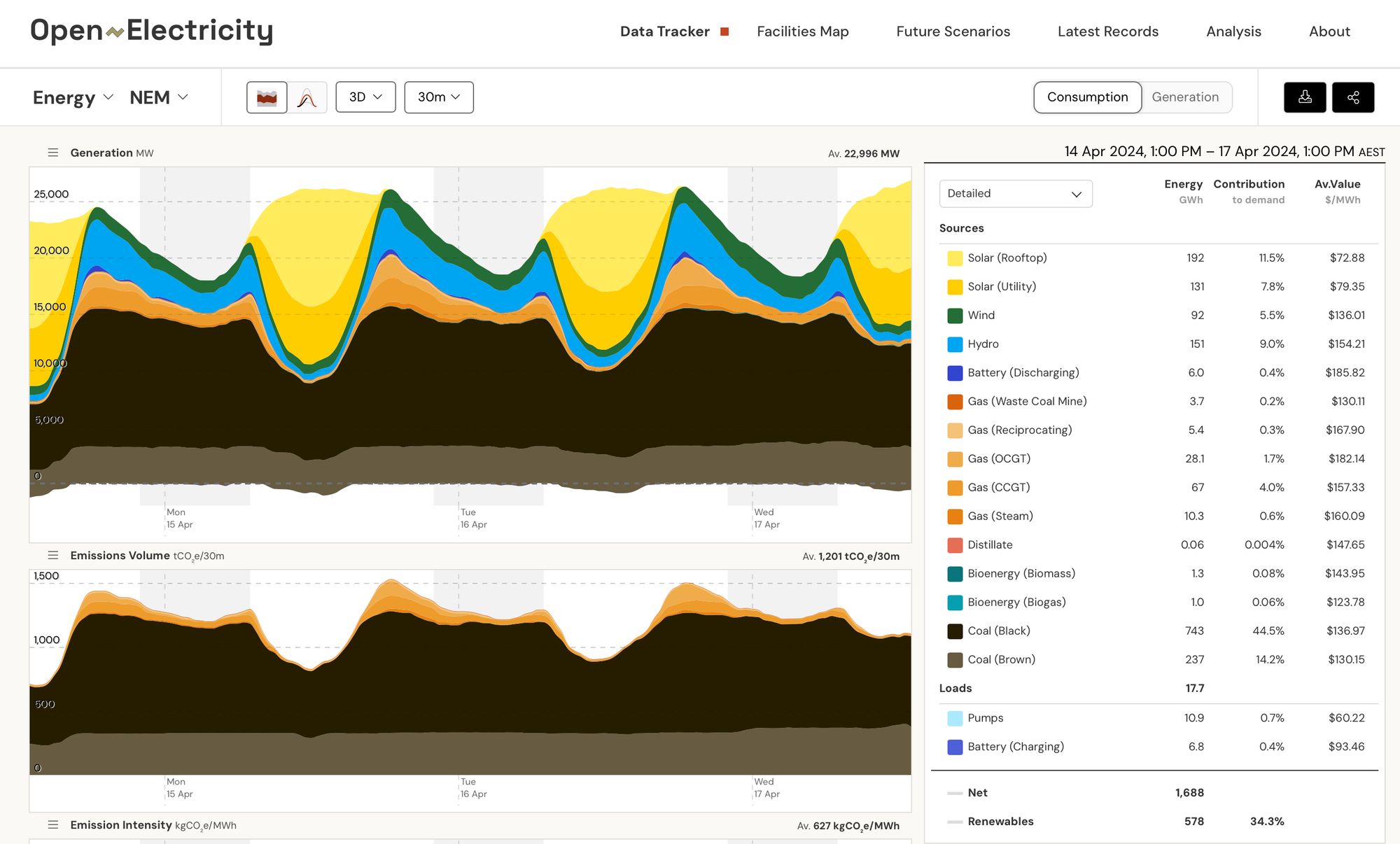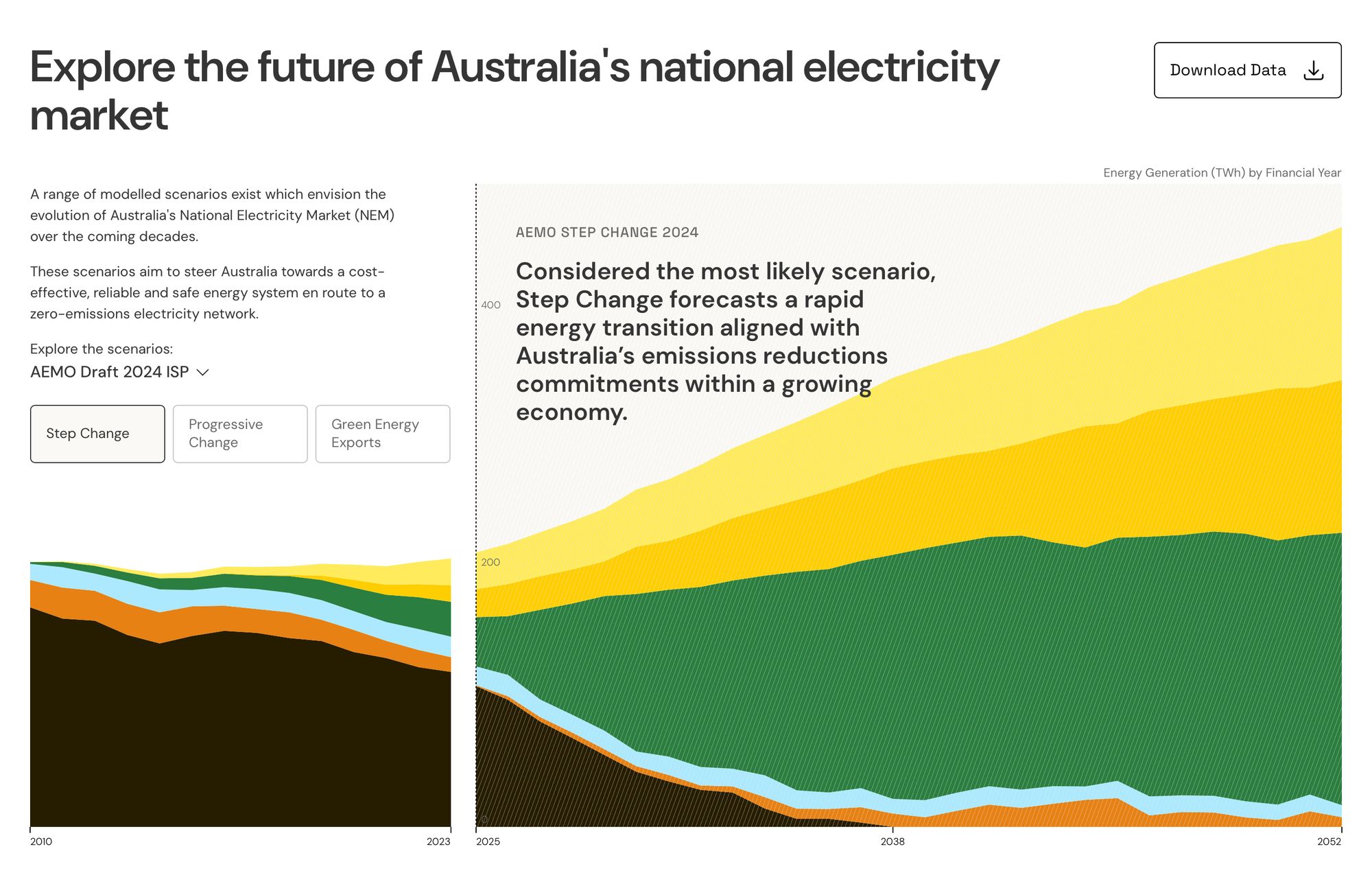Welcome, Open Electricity

A revitalised platform for understanding Australia’s electricity markets will herald in a new era of transparency and insight into the zero-carbon transition.

The Superpower Institute was created with a commitment to focus on the policy settings and market incentives needed to propel Australia into a superpower in the decarbonised global economy. We are dedicated to the provision of practical knowledge and advice to governments and industry to realise this opportunity.
There is hardly a better example of useful, practical knowledge than the data and stories contained within the detail of Australia’s rapidly transitioning electricity market.
When TSI was formed an opportunity arose, via director Simon Holmes å Court, for OpenNEM, a platform which had been tracking and visualising electricity generation data across the NEM’s five regions since 2008, to be brought under the institute's management as a foundation project within TSI’s Open Auditable and Accessible Data framework.
This framework provides open data to ensure accountability and measurement of critical elements in the superpower story, and tracking Australia's electricity transition is a fundamental pillar of this. TSI believes that the policy debate in Australia requires and can only benefit from data on key climate issues that is open and widely accessible. Too much of today’s debate is ill informed; widely accessible data is the vital response
“Too much of today’s debate is ill informed; widely accessible data is the vital response.”
In the first year of operation, the Institute has secured funding to guarantee the future of the OpenNEM project and has guided its growth into Open Electricity, the expanded application you see today.
The new features included in Open Electricity focus on record tracking, analysis and an interactive tool to help demystify the market operator’s Integrated System Plan, combined with an already vast historical dataset to give users a unique and powerful insight into the past, present and future of the National Electricity Market.
For example, Open Electricity will allow users to easily track progress and check our forward trajectory to 82% renewable energy in the National Electricity Market by 2030. Only if this is achieved can Australia meet its target of reducing emissions by 43% from 2005 levels by 2030.
Much is said about meeting this target, and the progress toward it, but currently only those with specialist knowledge can follow and, more importantly, critique this debate. Open Electricity changes this.

Users can also see the past rate of renewable energy growth, compare it to current rates of growth, look at the projections for future growth in Australia’s Integrated System Plan, and then form their own view as to the progress of decarbonisation.
One condition for the efficient growth of renewables as a contributor to the NEM is the need to build more transmission. Open Electricity allows users to easily see the mix of generation that will occur with different levels of new transmission as projected in the Australian Energy Market Operator’s Integrated System Plan.
If there are delays in the construction of transmission infrastructure, or if other roadblocks to the commissioning of green energy projects emerge, how will these things affect our future electricity generation mix, and our chances of meeting the 82% target? Open Electricity is designed to give users all the relevant information on this matter to better understand and participate in the public discourse.
Another key question is assessing the desired level of storage or gas peaking back-up. What ratios have we had in the past and will we have in the future? Open Electricity can track all this data by region. South Australia’s progress, for example, can be compared to other states. If Australia is not meeting the 82% target, which states can and need to do more?

The Australian Electricity Market Operator, or AEMO, tracks various demand scenarios and the amount of electricity generation needed to meet them. With past trends clearly shown, users can assess and query these projections and so do not have to accept them uncritically.
AEMO publishes an Integrated System Plan that presents a number of scenarios for the country's energy future. One of these is a 'Green Energy Exports' scenario. This particular scenario sees Australia lean into its competitive advantage and expand renewable energy infrastructure, resulting in very strong industrial decarbonisation and low-emission energy exports, albeit only with the National Electricity Market.
While much of the green exports will need renewable energy that is located off the current grid, some initial smaller projects will require more grid renewable energy. Australia’s progress to realising the immense benefits from green energy exports can be tracked by using Open Electricity.

There is so much more that can be done. We hope you can gather meaningful insights from the advanced tools we have developed, and we look forward to building on these even further into the future.
This article is licensed under a Creative Commons Attribution-NoDerivatives 4.0 International License (CC BY-ND 4.0). You are free to republish this article, provided you credit Open Electricity and do not make any changes to the content. For more details, visit our republishing guidelines.

